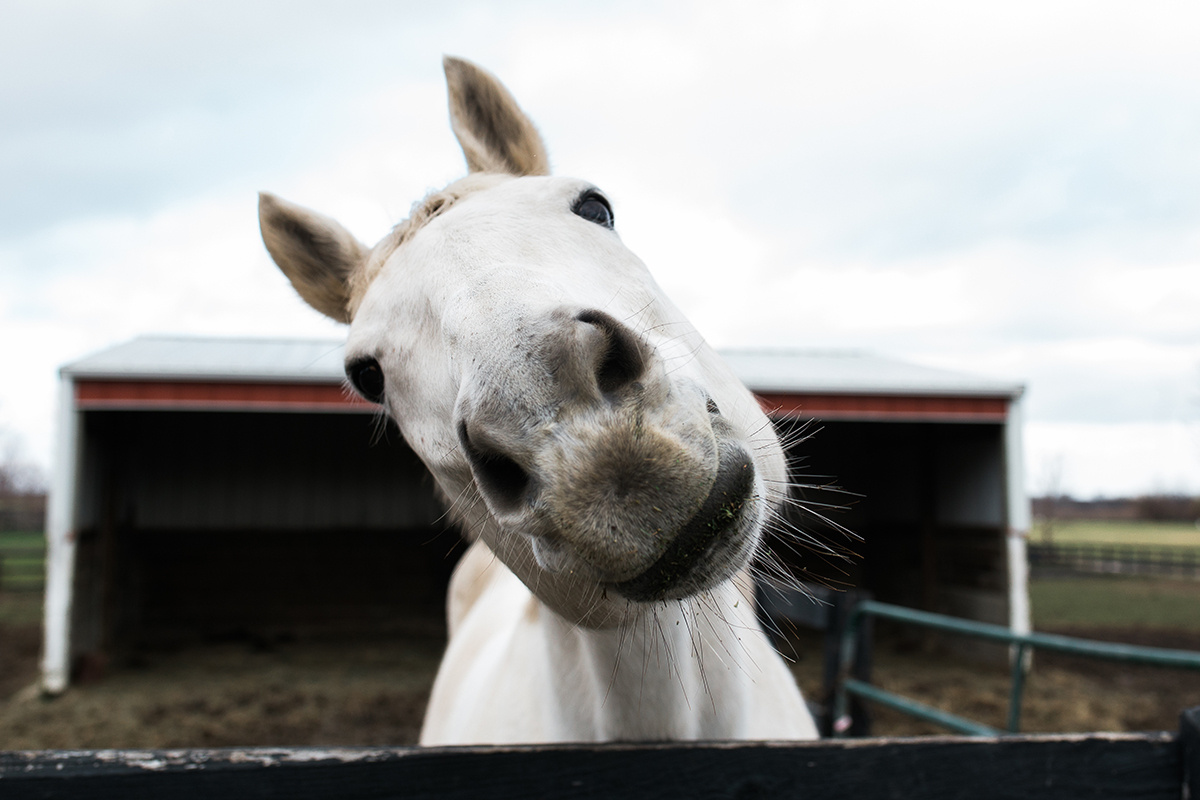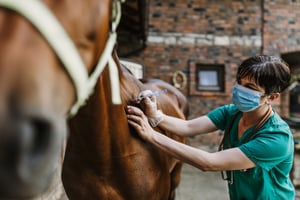Has My Veterinary Practice Outgrown Horos?

Spoiler Alert: You don’t have to give up Horos to effectively scale your practice!
Widely adopted and loved by the veterinary community, Horos (a popular, free, open-source software used on an Apple desktop for medical image viewing) is often the viewer of choice utilized throughout veterinarian training and beyond when veterinarians join the workforce.
As the chief sponsor of the Horos Project, Purview helps to maintain and support Horos, troubleshooting issues for veterinarians across the world. During these interactions, it is common to hear the pain points associated with a growing practice, which Horos was not designed to support. The free, open-source desktop viewer is powerful in many ways, but it’s important to know that Horos is designed for the individual user. It does not easily support remote access, multiple users trying to simultaneously view the same study, a growing volume of studies, long-term storage, and many other aspects of a growing organization.
Veterinarians have experienced a surge in demand following the 2020 pandemic and have found a greater need for flexible and central access, the ability to share, long-term storage, and more. Growing a practice is exciting, but navigating these issues amidst rapid growth can also be challenging. This article shares both the problems and solutions that other veterinarian practices have encountered and implemented for successful growth, without giving up their favorite desktop viewer.
Overcoming the Logistics of Working On-The-Go or Off-Site
Many large animal or equine veterinarians evaluate patients in the field or at the track. Viewing medical imaging remotely requires either central cloud storage, or that veterinarians load studies ahead of each visit. With the large size of DICOM images, constantly transferring studies can become time consuming and error prone. If a study is forgotten, veterinarians may need to return for a second visit, review the case again later, or otherwise forgo important information. If the preference is to view studies from a tablet, smartphone, or any non-Apple device, keep in mind that these displays don’t work with the Horos desktop viewer.
All of these issues were top of mind for Mobile Pet Imaging (MPI), a fully equipped mobile unit with cutting edge imaging equipment, who provide mobile imaging services to veterinarians across Florida. MPI performs scans right inside their mobile unit modalities, automatically uploads to the cloud, and shares access to the studies with the referring vet practice immediately. The MPI veterinary radiologist then evaluates, generates, and shares a branded report back with their referring vet client within 24 hours. Purview Image. While the average large animal vet doesn’t always travel with an entire truck full of imaging equipment, mobile imaging is becoming increasingly popular, making accessibility in the field an important consideration."
Ease of Sharing Can Impact Your Referral Volume
For specialty veterinarians, establishing a network of referring veterinarians is an important part of growing the business. Referring veterinarians appreciate when the specialist includes them in the process, sharing images, reports and other information back with them for continuity of care. Pet parents also appreciate the ability to understand the medical issue visually before moving forward with an expensive treatment or surgery.
Since Horos is a desktop viewer, it generally cannot share studies, moving veterinarians towards other disparate solutions like email or file sharing services. Referring veterinarians and pet parents can then download Horos themselves if they would like to view studies, but this is a cumbersome process.
Inside Information Radiology recognized this issue and adopted a cloud PACS, Purview Image™, to seamlessly receive studies, read, report, and share findings back with referring veterinarians. Today, Inside Information Radiology has grown their practice to work with hundreds of referring veterinarians across the world. Racing Victoria, a governing authority on the racing industry in Melbourne, Australia, similarly chose Purview Image™ to remotely request, view, and approve horses for racing. Viewing and signing off on current imaging ahead of horse racing, is a core part of the process, all of which takes place in Purview Image™.
Central Storage is Key To Scalability
As vet practices grow, many tend to adopt an array of systems to adapt to increasing demand. A typical setup can include modalities connected to individual workstations, the Horos desktop viewer, Google Docs or MS Word for reporting, and CDs, email (if small enough), or an online file sharing system. Additionally, Horos was not designed to work as a PACS, so the more studies you add, the slower Horos becomes. These processes become difficult or impossible to maintain as businesses grow. Veterinarians have shared stories about searching for a prior studies lost in email or across workstations prior to adopting central storage.
Veterinary Specialists Ireland ran into these issues, and turned to Purview Image’s centralized storage in the cloud PACS. Now VSI is able to access studies from anywhere, quickly share with referring veterinarians and pet owners, automatically upload scans to their cloud from multiple modalities, and more. Gone are the days of searching for studies across workstations, combing through company emails, asking colleagues to pull a file off their computer, or even uploading/burning CDs to share images. VSI has gone completely paperless without one IT employee. Clients like VSI have reported immeasurable gains that directly affect their bottom line. VSI has improved overall efficiency, sees fewer errors, happier clients, and deals with fewer headaches to get it all done. Watch or listen to VSI's full story. "
Don’t Forget About Backup!
As the volume of studies for growing vet practices increases, it can become impossible to store everything on a single desktop or workstation. Aside from slowing Horos down, with all studies on one computer, a practice is just one disaster away from losing all of their images. We’ve seen it before and we’ve heard it all - a computer is stolen out of a car, a hard drive fails, images are accidentally deleted, a natural disaster, and the list goes on. Outside of needing prior images to run a practice, most jurisdictions also regulate that veterinarians save medical images for a set number of years, usually more than five.
Some veterinarians may choose an on premise PACS, but keep in mind that veterinarians must establish the infrastructure and handle all maintenance, which typically includes employing an IT individual or an outside service. A cloud PACS takes that additional cost and responsibility off of the practice, enabling veterinarians to invest in their growth and scalability.
Recently, Agwest Vet Group experienced the unthinkable when their clinic and hospital facilities were flooded in the Fraser Valley, Canada. As one of the primary veterinarians for livestock across the region, the Agwest team was needed more than ever. Since all studies were backed up in the cloud, they temporarily moved operations to work out of a basement while continuing to service all of their patients, helping them through a crucial time, and proving the importance of off-site backup.
Final Thoughts
A cloud PACS can help to alleviate the aforementioned growing pains, but it’s important to understand that if you’re a vet that loves to use Horos as your personal desktop viewer, you don’t have to give it up. Purview Image™ is designed to launch images right from the cloud PACS to the Horos desktop viewer whenever veterinarians choose.
Don’t suffer through the growing pains of a successful business and instead invest in your future by adding a cloud PACS to your set of tools so you can seamlessly upload, share, view, access, and report on studies from anywhere, and on any device.
Learn More about Purview Image


%20wp-content/2017/11/ViVA-for-Vet_Viewer-Images-1024x583.png?height=200&name=ViVA-for-Vet_Viewer-Images-1024x583.png)

